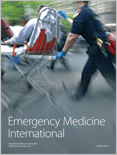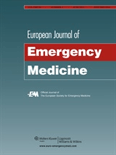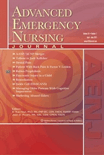
Open Access Emergency Medicine
Scope & Guideline
Connecting researchers to the forefront of emergency healthcare.
Introduction
Aims and Scopes
- Clinical Assessment and Management:
The journal includes studies on clinical assessment tools and management strategies for various emergency conditions, such as acute coronary syndromes, trauma, and sepsis. This focus aims to improve patient outcomes through evidence-based practices. - Emergency Care Protocols and Innovations:
Research on the development and evaluation of emergency care protocols, including point-of-care ultrasound and advanced airway management, highlights innovations that enhance efficiency and effectiveness in emergency settings. - Public Health and Emergency Preparedness:
The journal addresses the intersection of public health and emergency medicine, exploring topics such as disaster preparedness, prehospital care, and the impact of infectious diseases on emergency services. - Patient Safety and Quality of Care:
Studies examining factors influencing patient safety and quality of care in emergency departments, including crowding, triage processes, and communication strategies, are prevalent, reflecting a commitment to enhancing healthcare delivery. - Socioeconomic and Cultural Factors in Emergency Care:
The journal recognizes the importance of socioeconomic and cultural factors affecting emergency care access and outcomes, often focusing on underserved populations and global health issues.
Trending and Emerging
- Impact of COVID-19 on Emergency Medicine:
There is a notable increase in research related to the impact of the COVID-19 pandemic on emergency services, including changes in patient behavior, care protocols, and the operational challenges faced by emergency departments. - Telemedicine and Remote Consultations:
Emerging studies on the role of telemedicine in emergency care, especially during the COVID-19 pandemic, highlight the importance of remote consultations and their effectiveness in triaging and managing patients. - Mental Health and Emergency Care:
A growing trend in addressing mental health issues within emergency settings is evident, with studies focusing on compassion fatigue among emergency providers and the management of psychiatric emergencies. - Use of Technology in Emergency Medicine:
Research on the integration of technology, such as artificial intelligence and point-of-care ultrasound, is on the rise, emphasizing the potential for these tools to enhance diagnostic accuracy and patient management in emergencies. - Global Health and Emergency Preparedness:
An increasing emphasis on global health challenges and emergency preparedness indicates a shift towards understanding how emergency medicine can respond to public health crises on a broader scale.
Declining or Waning
- Traditional Trauma Studies:
Although trauma remains a critical area, the volume of traditional studies focusing solely on trauma mechanisms and outcomes has decreased, possibly due to a shift towards more integrated approaches that consider broader emergency care dynamics. - Basic Life Support Training Research:
There appears to be a waning focus on basic life support training studies, as the field increasingly emphasizes more advanced skills and technologies in emergency response rather than foundational training alone. - Non-Emergency Medical Services Research:
Research focusing on non-emergency medical services aspects has declined, possibly as the journal emphasizes more direct emergency care topics and innovations relevant to immediate patient treatment.
Similar Journals

Canadian Journal of Emergency Medicine
Innovating Practices for Optimal Patient OutcomesWelcome to the Canadian Journal of Emergency Medicine, an esteemed publication in the field of Emergency Medicine published by SPRINGER HEIDELBERG. With its ISSN 1481-8035 and E-ISSN 1481-8043, this journal serves as a vital resource for cutting-edge research and reviews from 1999 to 2024, maintaining a prominent position in the academic landscape as evidenced by its Q2 ranking in the Emergency Medicine category and a commendable Scopus ranking of #35 out of 109 journals. The journal is committed to advancing medical practices and improving patient outcomes through rigorous- peer-reviewed articles that address contemporary challenges and innovations in emergency care. Though it is not an open-access publication, it remains an essential platform for sharing knowledge among health professionals, researchers, and students dedicated to optimizing emergency medical services and enhancing overall healthcare delivery.

Emergency Medicine International
Empowering practitioners with vital insights in crisis intervention.Emergency Medicine International is a distinguished journal dedicated to the dynamic field of emergency medicine, published by HINDAWI LTD. As an Open Access journal since 2010, it ensures widespread dissemination of high-quality research, providing vital insights and advancements in emergency care and crisis intervention methodologies. With an ISSN of 2090-2840 and an E-ISSN of 2090-2859, the journal is indexed in Scopus, where it holds a commendable rank of #104 of 109 in the emergency medicine category, placing it in the 5th percentile. Spanning crucial years from 2014 to 2017 and 2022 to 2024, Emergency Medicine International has established a reputation for publishing significant findings that aid practitioners and researchers in improving emergency healthcare outcomes. Operating from its headquarters in Egypt, the journal serves as an essential resource for professionals and students alike, fostering the development of evidence-based practice in a critical area of healthcare.

Acute Medicine & Surgery
Advancing knowledge at the intersection of acute medicine and surgery.Acute Medicine & Surgery is a notable peer-reviewed journal published by WILEY, focusing on the dynamic intersection of acute medicine and surgical practice. With an ISSN of 2052-8817, this open-access journal has been committed to disseminating high-quality research since its transition to open access in 2017. Aimed at an audience comprising researchers, clinicians, and students in the medical field, it facilitates broader access to innovative studies that enhance understanding and practice within acute care settings. The journal covers a wide range of topics, including emergency medicine, trauma care, critical analysis of surgical techniques, and best practices in clinical management. By providing a platform for cutting-edge research and case studies, Acute Medicine & Surgery plays a pivotal role in improving patient outcomes and advancing the field of acute healthcare.

Emergencias
Leading the Way in Emergency Medicine ExcellenceEmergencias is a prestigious journal in the field of Emergency Medicine, published by the Sociedad Española de Medicina de Urgencias y Emergencias (SEMES). This journal has established itself as a vital platform for sharing cutting-edge research and practical insights, ranking in the top 20 of emergency medicine journals according to Scopus, with a commendable 82nd percentile performance. Since its inception, it has maintained a commitment to advancing knowledge and practice in emergency care, making contributions essential for both researchers and practitioners. The journal features diverse articles covering clinical guidelines, innovative techniques, and case studies, reflective of its importance in guiding timely medical interventions. As an open access publication, it encourages widespread dissemination of knowledge, fostering collaboration and understanding across the global emergency medicine community. Emergencias continues to publish high-quality research until 2024, making significant strides in enhancing emergency healthcare practices in Spain and beyond.

Notfall & Rettungsmedizin
Advancing emergency care through innovative research.Notfall & Rettungsmedizin is a leading journal in the field of Emergency Medicine, published by Springer in Germany. With a focus on advancing the science and practice of emergency care, this journal offers a platform for original research, critical reviews, and case studies that address the latest challenges and innovations in the field. The journal ranks in the Q2 category of Emergency Medicine for 2023, reflecting its commitment to high-quality scholarship and impactful research, evidenced by its Scopus ranking of #51 out of 109, placing it within the 53rd percentile. Although it does not provide open access, the content is invaluable for researchers, healthcare professionals, and students engaged in emergency medicine. From its inception in 1999 to its continuous publication through 2024, Notfall & Rettungsmedizin remains a vital resource for disseminating knowledge and fostering professional development in emergency care worldwide.

European Journal of Emergency Medicine
Shaping the Future of Emergency Medical PracticesWelcome to the European Journal of Emergency Medicine, a premier publication dedicated to advancing the field of emergency medicine. Published by Lippincott Williams & Wilkins, this journal serves as a vital resource for researchers, practitioners, and students alike, delivering high-quality, peer-reviewed articles that reflect the latest advancements and best practices in emergency care. With its publication history dating back to 1994 and a projected convergence until 2024, the journal has established itself as an influential voice in the field, boasting a commendable Q2 ranking in Emergency Medicine as of 2023. The Scopus ranking further reinforces its prestige, placing it in the 73rd percentile among its peers. Although currently not an Open Access journal, the European Journal of Emergency Medicine remains committed to making critical knowledge accessible and impactful within the global medical community. We invite you to explore cutting-edge research, innovative studies, and key clinical insights that are essential for improving patient outcomes and advancing emergency medical practices.

BMC EMERGENCY MEDICINE
Connecting researchers to enhance patient outcomes.BMC Emergency Medicine is a premier, open-access journal that has been at the forefront of the field of emergency medicine since its inception in 2001. Published by BMC in the United Kingdom, this journal is distinguished by its impact factor and remarkable Q1 ranking in emergency medicine, placing it among the top-tier publications in this vital area of healthcare. With a current Scopus rank of #30 out of 109 in the category of Emergency Medicine, and occupying the 72nd percentile, BMC Emergency Medicine is a leading platform for researchers and practitioners alike to disseminate their findings related to urgent and critical care. The journal embraces a broad scope within emergency medicine, encouraging submissions on a wide range of topics including clinical practice, innovative techniques, public health, and policy issues that critically affect emergency care. The open-access model ensures that high-quality research is readily available to the global community, fostering collaboration and advancing knowledge in the field. For those dedicated to improving patient outcomes in emergency settings, BMC Emergency Medicine represents an invaluable resource and community.

Notarzt
Bridging gaps in knowledge for improved patient outcomes.Notarzt is a well-regarded academic journal published by GEORG THIEME VERLAG KG, focusing on critical care, intensive care medicine, and emergency medicine. With an ISSN of 0177-2309 and an E-ISSN of 1438-8693, this German-based journal has been contributing to the medical field since its inception in 1985. Despite being categorized in the Q4 quartile for both Critical Care and Intensive Care Medicine and Emergency Medicine, Notarzt continues to provide a platform for innovative research, case studies, and developments that inform practitioners and researchers alike. With a publication history spanning significant years such as 1993 and 1999 to 2024, Notarzt is dedicated to improving outcomes in emergency and critical care settings through the dissemination of pivotal findings and comprehensive reviews. Although currently not an Open Access journal, it remains an essential resource for professionals striving to stay abreast of developments in their field.

Australasian Emergency Care
Driving Innovations in Emergency Care Delivery.Australasian Emergency Care, published by ELSEVIER SCI LTD, stands out as a premier journal in the field of Emergency Nursing, currently holding a prestigious Q1 ranking and positioned in the top 85th percentile according to Scopus metrics. With an E-ISSN of 2588-994X, this journal has been a vital platform for disseminating cutting-edge research since its inception in 2018. Focused on enhancing the practice, education, and research surrounding emergency nursing, Australasian Emergency Care serves as an essential resource for clinicians, educators, and researchers, offering access to a wide array of high-quality peer-reviewed articles. The importance of this journal lies in its commitment to improving patient outcomes through evidence-based practices and innovations in emergency care, making it a pivotal resource for anyone dedicated to advancing their knowledge and expertise in this critical field.

Advanced Emergency Nursing Journal
Advancing Knowledge in Emergency Nursing ExcellenceAdvanced Emergency Nursing Journal, published by Lippincott Williams & Wilkins, stands as a key resource within the domains of Emergency Medicine and Emergency Nursing. With a commitment to advancing the field, this journal provides a platform for rigorous research, critical reviews, and innovative practices aimed at enhancing patient care in emergency settings. Though it holds a Q3 ranking in both related categories as per the 2023 metrics, its global reach spans various aspects of emergency care, promising insights that are crucial for both professionals and academics alike. Covering topics from clinical procedures to policy analysis, the journal invites submissions that aim to bridge theory and practice, highlighting the importance of evidence-based approaches in emergency nursing. Researchers, educators, and healthcare practitioners can Find more information and explore their own contributions in a dynamic environment that continuously evolves with the field. Whether you're seeking to stay current with the latest advancements or to publish your findings, this journal is an essential asset for those dedicated to improving care in urgent medical situations.